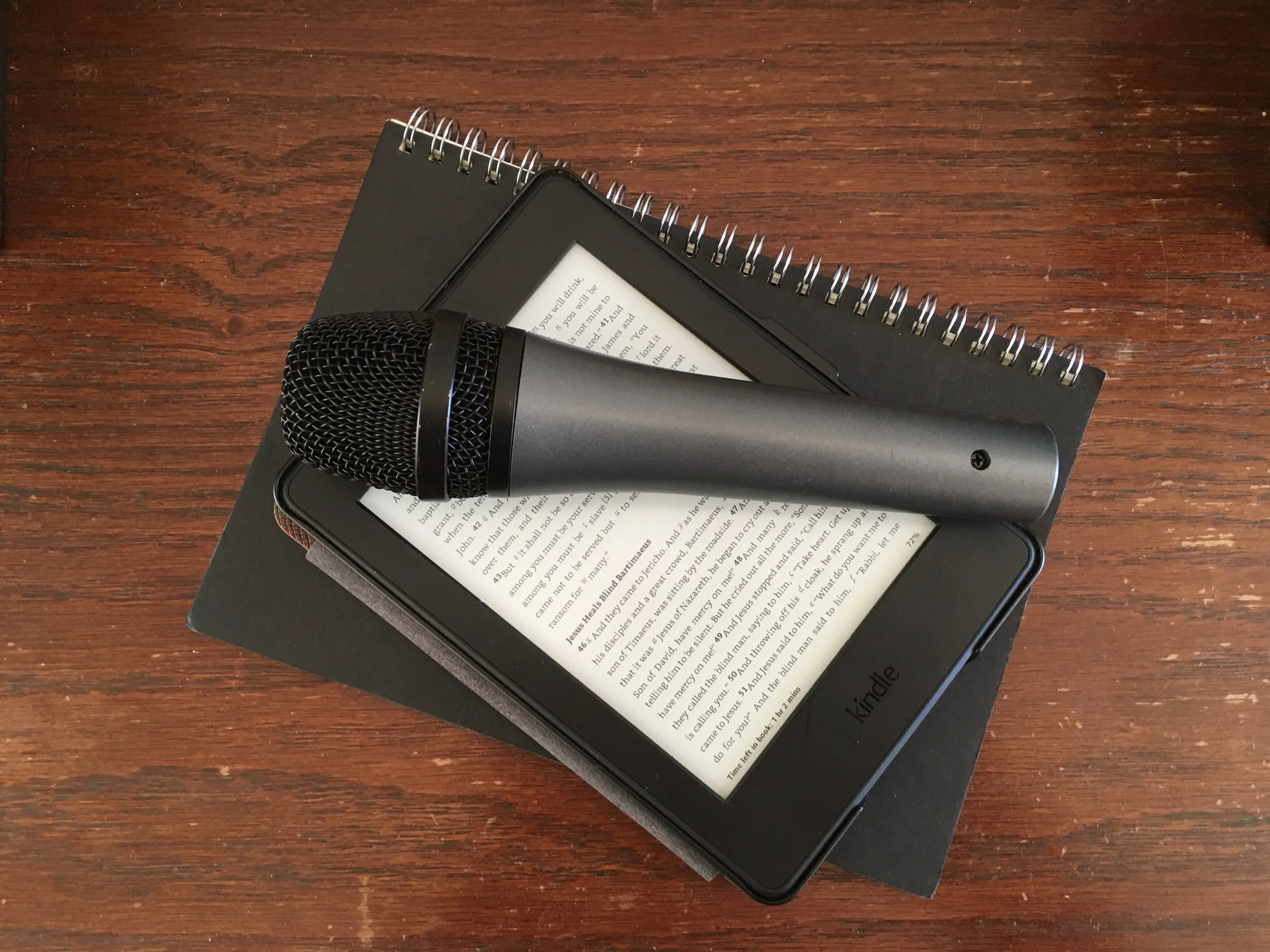Stand and Deliver resources
Part C - Delivery
Using a microphone
WHY USE A MICROPHONE?
We don't use a microphone to maker us louder; we use a microphone to make us heard.
Used properly, a microphone makes it easier for people to hear you. A microphone may not even be making our voice much louder, but it will be putting our voice through speakers which can make it easier for people to hear us in different parts of the room.
If you are given a microphone to use, use it.
Accept the microphone even if you don't think you need it! We want to assume that the people giving us the microphone - generally the sound person or the event organiser - knows the room and the audience better than we do, and if they think we need a microphone, we should believe them!
Here are some examples of why we might need to use a microphone, even if we don't think we do:
Our volume fluctuates. This is a good thing, as it makes us more interesting to listen to! But it does mean that while people might hear you fine when talking enthusiastically at the start of your talk, they may find it hard to hear when you drop your volume later in a more reflective section of your talk.
Being inclusive. There may be people in the audience who have hearing issues who would struggle to follow us without a microphone. By using a microphone, we are including them.
Room acoustics. Sometimes the shape or set up of a room can mean that while people in a certain section can hear well, people in another section will struggle. A microphone enables our voice to be put through speakers so that everyone can hear, no matter where they sit.
Sound distractions. There may be intermittent sound distractions such as babies crying, an air conditioner coming on half-way through our talk, or rain outside. Using a microphone helps people hear our voice above these distractions. The sound person or event organiser is probably more aware of these potential distractions than we are, so we trust their judgment.
Avoid asking the audience if you need the microphone
It may be tempting to ask the audience: "Do I need the microphone? You can hear me okay without the microphone can't you? Good!".
Problems with this approach:
When you ask this question, the people in front of you will likely agree that they can hear you just fine. The people in the back however may not even hear you ask the question, so they may not speak up to say they can't hear you!
There may be only one or two people there who will struggle to hear you without a microphone due to hearing issues, or holding a baby near their shoulder, or being close to the door. They may not be willing to speak up for fear of embarrassment or inconveniencing you, meaning they'll miss out.
At the start of our talk, we are often speaking at our loudest. The volume with which you ask "Can you hear me okay?" is likely louder than the average volume of the rest of your talk.
BUT I HATE MICROphones!
Do you freak out when handed a microphone? Do you recoil when you hear your voice through the speakers? You're not alone!
"Quote about hating using microphones", Anonymous
"Quote about being scared of microphones", Anonymous
If speaking / preaching / teaching is on the radar for your life, fear of microphones will be something you want to address!
Tips for addressing fear of microphones:
Practice. The more you get used to holding a microphone, speaking into one and hearing your voice, the less 'freaky' it will be.
Ask why. Why is it that you hate microphones? Is it because of an embarrassing experience in the past? Are you self-conscious about your voice? Is it a subconscious belief that you don't deserve to be heard? Is it simply that you don't know how to use one properly? By identifying the reason you may be able to take simple steps to address it. If you suspect it's a reflection of a serious emotional or psychological issue, talking to a counsellor or psychologist might help.
Ask for help. Once you know how to use a microphone properly, it will increase your confidence! Sound people are generally able and willing to give you instructions on how to use a microphone. Sound people have a lot to get done during set up, so try and arrive early to allow enough time for them to spend a few minutes with you. More tips on working with sound people below.
Watch others. Observe how they hold the microphone and what their voice sounds like through the speakers.
Types of microphones
Hand held
This is the most common type of microphone, sometimes with a cord attached and sometimes wireless.
Even if you intend to use one of the other microphone types listed below, a hand held will often be there as a back up.
Benefits of hand held:
You can easily control what the microphones picks up by moving it away from you as necessary (e.g. you can move it away from your mouth when coughing).
If you tend to fidget, holding a microphone can help keep your hand steady.
You can control your volume if needed, e.g. by holding it further away when speaking really loudly, or bringing it closer to your mouth when speaking in hushed tones.
Disadvantages of hand held:
You will only have one hand free for gestures, turning pages, holding your Bible etc.
If the microphone is attached to a cord, you may be limited in where you can move.
The sound person can only control your volume if you are holding it in the right place - if holding it too far away they may not be able to make you loud enough to be heard.
Lapel mic
This is a little microphone that clips on to your clothing (named after the 'lapel' of a jacket or shirt). There may be a thin cord that runs from the microphone to a battery pack which you put in your pocket, or it might be wireless.
Benefits of lapel mic:
You have both hands free to gesture and work with your notes.
You have complete freedom to move around the stage.
You can 'set and forget', meaning once it's in place you don't need to worry about moving it closer or further away.
Disadvantages of lapel mic:
Depending on what you're wearing, it is sometimes difficult to find a suitable place to clip it (for example, if you are wearing lightweight fabric it can drag the material down).
If it is placed incorrectly, or if it moves out of place, it can produce distracting noise from rubbing against your clothing.
It can capture unintentional sounds such as coughing, hiccuping or loud breathing.
Face mic (name?)
This is a small microphone that sits against your cheek, held in place by a xxx that sits around your ear.
Benefits of a face mic?
You have both hands free to gesture and work with your notes.
You have complete freedom to move around the stage.
You can 'set and forget', meaning once it's in place you don't need to worry about moving it closer or further away.
Disadvantages of
Some people find it annoying or uncomfortable to have something on their face.
It can capture unintentional sounds such as coughing, hiccuping or loud breathing.
WORKING WITH SOUND CREW
Before you begin
What sound people find helpful
Microphone troubleshooting
Further resources
>> More on



